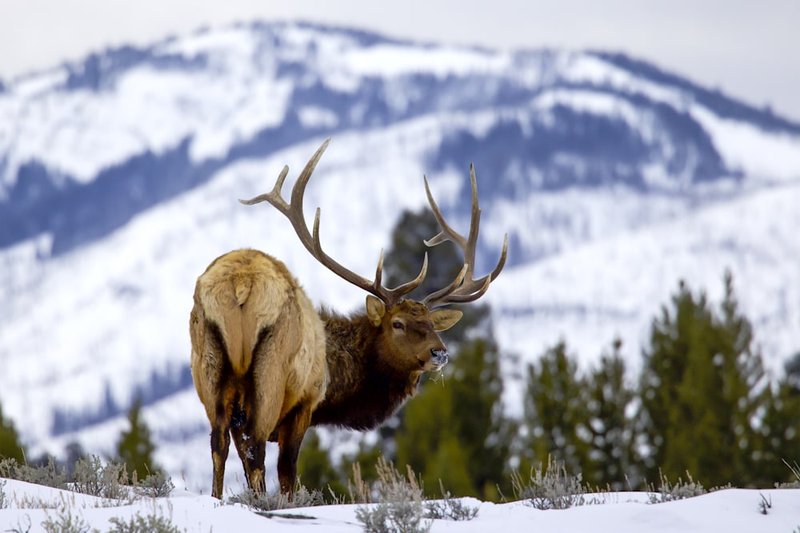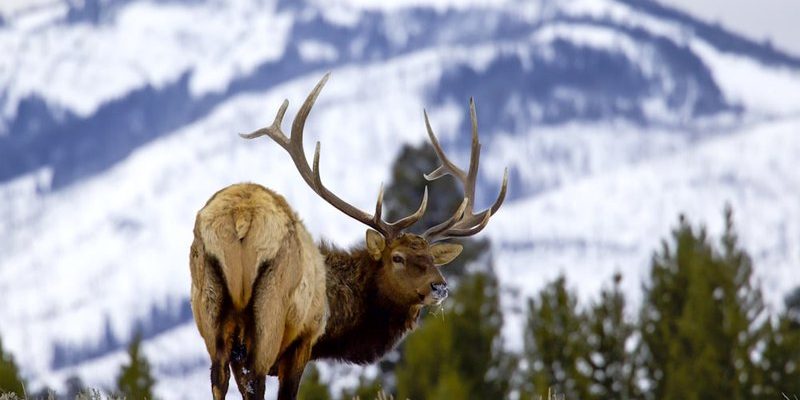
Elk aren’t just mindless grazers. They exhibit complex behaviors that suggest a level of intelligence we might not usually associate with wildlife. From their intricate social structures to their impressive memory skills, elk demonstrate that their brains are as impressive as their bodies. Just like us, they have to adapt, learn, and sometimes outsmart predators. So, grab a cup of coffee, and let’s dig into the world of elk intelligence!
Understanding Elk Behavior
To truly grasp how smart elk are, we first need to take a close look at their behavior. Elk are social animals, typically living in herds. This social structure not only helps them find food but also plays a crucial role in their survival. They communicate with each other through vocalizations, body language, and even scent marking.
You might be wondering how these interactions reflect their intelligence. Well, elk have been known to cooperate when foraging for food. If one elk finds a good food source, it may call others over to share. This not only strengthens their social bonds but also showcases their ability to make decisions based on their surroundings. It’s like when you and your friends decide to share a pizza; teamwork makes the task easier and more enjoyable!
Problem-Solving Skills
Elk are surprisingly adept at problem-solving, especially when it comes to avoiding predators. These animals often have to think on their feet (or hooves) to stay safe. For example, if they sense danger nearby, elk might use clever tactics to evade hunters. They can identify escape routes and work together to throw off the scent of predators.
This kind of quick thinking shows that elk have a good understanding of their environment. It’s similar to how we might plan our escape routes in an unfamiliar place. They also remember locations of threats and safe zones, which indicates not just instinct but a learned response to previous experiences.
Memory and Navigation
Speaking of memory, elk have remarkable navigational skills. During migration, they travel long distances to find food and suitable shelter. Interestingly, they seem to remember the way to their favorite spots even after long periods away.
Think of it like how you might return to your favorite childhood park. Elk are able to recall specific landmarks and seasonal changes. They’ve developed an internal compass that helps them find their way through vast landscapes. Studies suggest that this memory plays a crucial role in their survival, proving that there’s more to these animals than just instinct.
Communication and Social Structure
As we mentioned earlier, elk are social creatures, and their communication is a vital part of their intelligence. They use a variety of sounds, from bugling calls during mating season to softer grunts when congregating. Each sound has its meaning and helps keep the herd coordinated.
Elk also display complex social hierarchies, with dominant males typically leading the group. This social structure is essential for establishing roles within the herd. It’s like having a team captain in sports; the elk recognize the leadership and follow cues. The ability to work together and communicate effectively indicates a high level of cognitive function.
Learning from Experience
You might think that elk only rely on instinct, but they actually learn from their experiences. For instance, mother elk teach their calves essential survival skills, from foraging to recognizing potential dangers. This learning process is crucial for the young elk to thrive in the wild.
Just like how we learn from our parents or surroundings, elk pass down knowledge that can be critical for the next generation’s survival. Studies have shown young elk that observe their mothers can mimic behaviors, which enhances their ability to adapt and survive.
Emotional Intelligence
One aspect of elk intelligence that often goes unnoticed is their emotional depth. Elk can form strong bonds with each other, displaying behaviors that suggest empathy. They grieve when a fellow elk is lost, and they can show signs of distress when separated from the herd.
Imagine facing tough times with your friends — that support and connection is vital. Elk also comfort each other through physical touch and close proximity. This emotional intelligence helps strengthen their social ties, contributing to the overall stability of the herd.
The Role of Instinct vs. Intelligence
While elk showcase impressive intelligence, instinct still plays a big role in their behavior. Their natural reactions to threats, seasonal changes, and food availability are deeply rooted in their genetic makeup. However, combining instinct with learned behaviors and social interactions creates an adaptable and intelligent species.
It’s like baking a cake; you need both the right ingredients and the right technique. Elk blend their instinctual knowledge with learned experiences, allowing them to thrive in ever-changing environments.
So, how smart is an elk? The more we explore their behaviors and cognitive abilities, the clearer it becomes that they are equipped with more intelligence than we often give them credit for. From their impressive memory skills to their complex social structures, elk show us that intelligence in the animal kingdom can be multifaceted.
Next time you spot an elk, take a moment to appreciate not just its beauty but also the remarkable mind behind those gentle eyes. Elk exemplify a blend of instinct and intelligence that guides them through life in the wild — a true testament to the wonders of nature!

